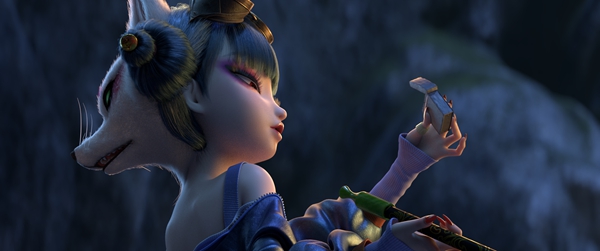

With an iconoclastic depiction of true love, set against societal prejudice and feudal doctrines of the time, the legend's popularity has spanned generations.
It has evolved over the centuries, spawning operas and novels, as well as films and many TV series in recent decades.
However, its reputation has also cramped the scope for further creativity.
"Most audiences know the original story very well. We need to give them something that they have never seen before," says Wong.
The franchise directly skips the initial ancient tale, which is fictionalized to take place in the Song Dynasty (960-1279). Respectively, the first White Snake film is set 500 years earlier, and White Snake 2 picks up from where the first film ends but develops with an ambiguous timeline.
Green Snake, the younger sister of the White Snake, and a similarly powerful serpent spirit, from a supporting role in the first film, becomes the sequel's protagonist.
Unfolding from an epic battle in which the two spirits-both assuming the human form of two beautiful women-conjure up a flood while facing off against a powerful Buddhist monk, the sequel follows the Green Snake's new adventures in a strange and brutal world.